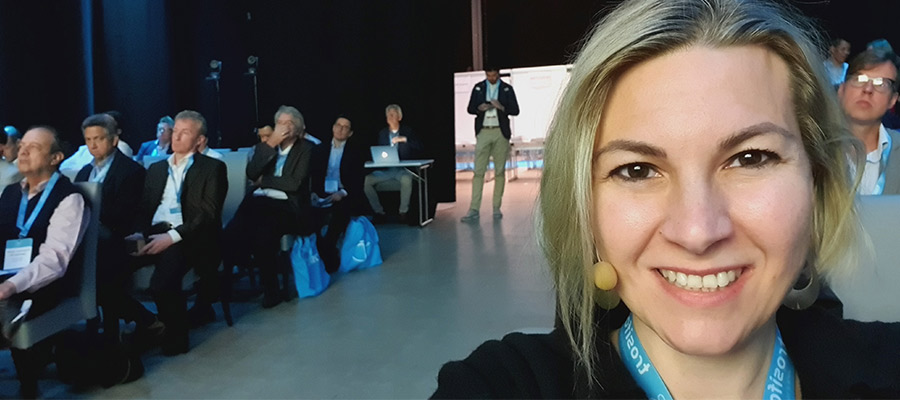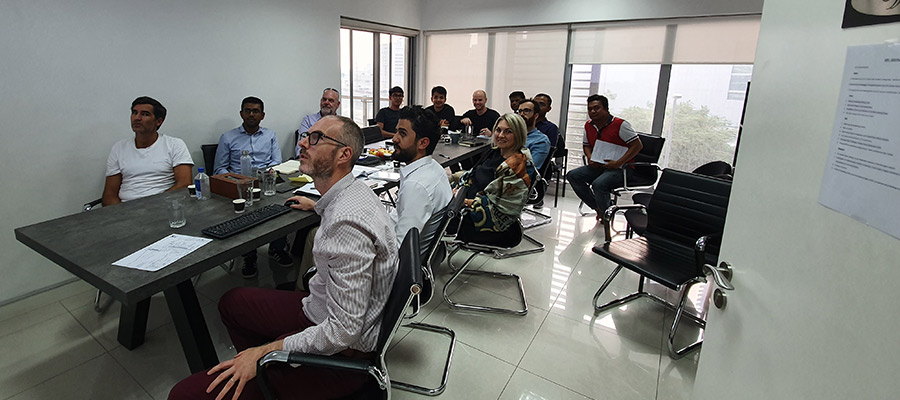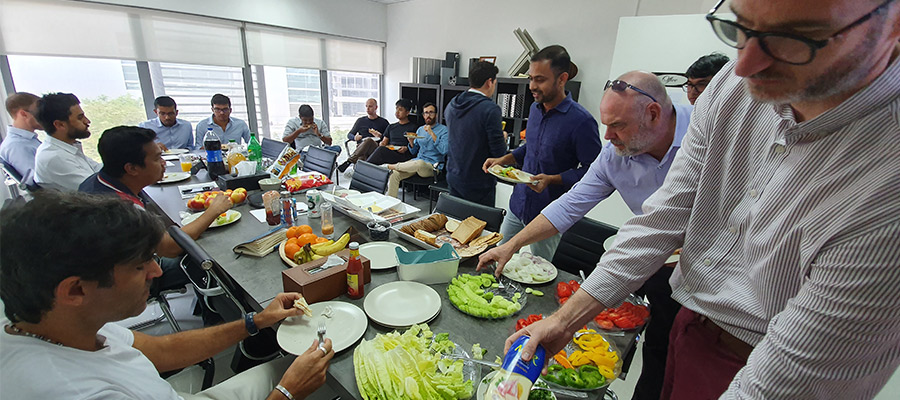News
Glass Performance Days in Finland

It is June and it is an odd year, which means we go to Finland, to attend Glass Performance Days (GPD), a large conference and exhibition event organized every two years for glass industry people. This year was a special one as it had the farewell of Jorma Vitkala, GPD's "father". Apart from that, it also had 2 days of workshops, followed by over 180 presentations. This year's focus was on energy-efficiency, future trends, R&D, new applications, smart glass and thin glass technology. Similarly to previous GPDs, this year also had a good number of attendees, above 700 glass friends.
All above sounded interesting enough to us to board a plane and fly to Helsinki, then ride a train, up north to a town called Tampere, for the week. (Apparently they sold awesome fresh tasty strawberries at the train station!). Mutasem and Saif from our Dubai team and Omar from our Singapore office participated on select full day workshops prior to the conference days, while Agnes arrived later to join the 3 main conference days and give a speech herself, on the Facade Engineering and Facade Access Design of one of our landmark Dubai projects, Sky View.

We like GPD because we always hear interesting and highly technical presentations, and always learn something. We like learning. We like being stimulated with new ideas. And we like meeting with the "small village" of worldwide like-minded people, passionate about glass. Here are a few interesting workshops and seminars we attended, just a few select ones among the many great sessions.
Omar attended the a workshop on the Structural Design of Laminated Glass discussing research on the shear coupling effect. This is an interesting topic for us, as glazing on our hot climate projects easily reach elevated material temperatures, therefore we always account for a reduced -so called "effective"- thickness when calculating with laminated glass. To be accurate, there are different effective thicknesses for stress checks and for deflection checks. Unfortunately, at material temperatures above 50 Celsius, SGP ionoplast interlayer also drops its performance, similarly to PVB.
One of the workshops Saif attended focused on quality checks of tempered glazing, introducing different online scanning methods and achievable quality aspects. Facade engineering is a very complex integrated field with expectations of good knowledge of a wide variety of building materials. Glazing is an important part of almost all of our projects. We frequently carry out production inspections, assess quality of installed glazing. We have to be practical and fair with expectations on glass quality, hence knowing the constantly expanding industry possibilities is very useful for us. GPD had many other sessions on glazing quality, some that we attended focused on curved glazing quality, anisotropy in tempered glass, glass corrosion, coated glass quality. Glaston has developed a handy mobile phone application that helps with quick checks on tempering quality of broken glass: all you need is to take a photo, and the app counts the whole and half particles, to assess whether the fractured particle number over the 5cm x 5cm area meets the code requirements. Search your app store for "Glaston Siru" to try it.
Many of the speeches and one of the attended workshops explored vacuum insulated glazing units (VIG). This is a very exciting technology to us and cannot wait for a project to use it. Vacuum is a perfect insulator and VIG glazing provides very high energy efficiency and high sound insulating performance. Can you guess when was the idea of VIG invented? Is it a new technology? Well... In 1913... The technology is researched and developed since, but constantly faces limitations on commercial feasibility, limited unit sizes and very visible support pillars. Additionally, it seemed challenging to guarantee the stability of vacuum over extended period required for use on buildings, if the vacuum is lost, the insulation property is lost. This is called outgassing. Outgassing seems to be solved with recent technologies of edge sealing. There have been also a great amount of experiments to find the optimal material and depositing technology to form the support pillars. These pillars ensure that the two this glass panes do not touch eachother (which would be a thermal bridge, among other negative consequences) even if the vacuum would encourage them to bend inwards. The vacuum gap is typically 0.1 - 0.3 mm. The pillar technology, price point and the maximum production size are improving slowly and the currently available products are aesthetically pleasing (meaning the dotmatrix of the pillars are only visible at very close inspections), have really good U-values (below 0.6 W/m2K, or below 0.4 W/m2K if applied as outer lite of double glazing), come in standard sizes (2.5m x 1.5m available), and can be well used for refurbishment projects due to its thickness of 3-4mm and light weight. In our opinion, VIG is best fit for replacing single glazing of protected buildings or older buildings, such as re-purposing warehouses to loft apartments. (Note: mentioned values depend on actual product and its parameters).
The conference for us has not finished with the eventful week in Tampere. Our company tradition requires attendees of technical events to give a summary to the rest of our team. So all four of us selected 3-3 interesting presentations plus the 2 workshops, - yes, we had 20 topics!!- and we dedicated a whole day for "Koltay Facades Mini GPD". Ok, almost a day, since we needed to account for the time zoning difference in between Dubai and Singapore team - they joined us on video call.


